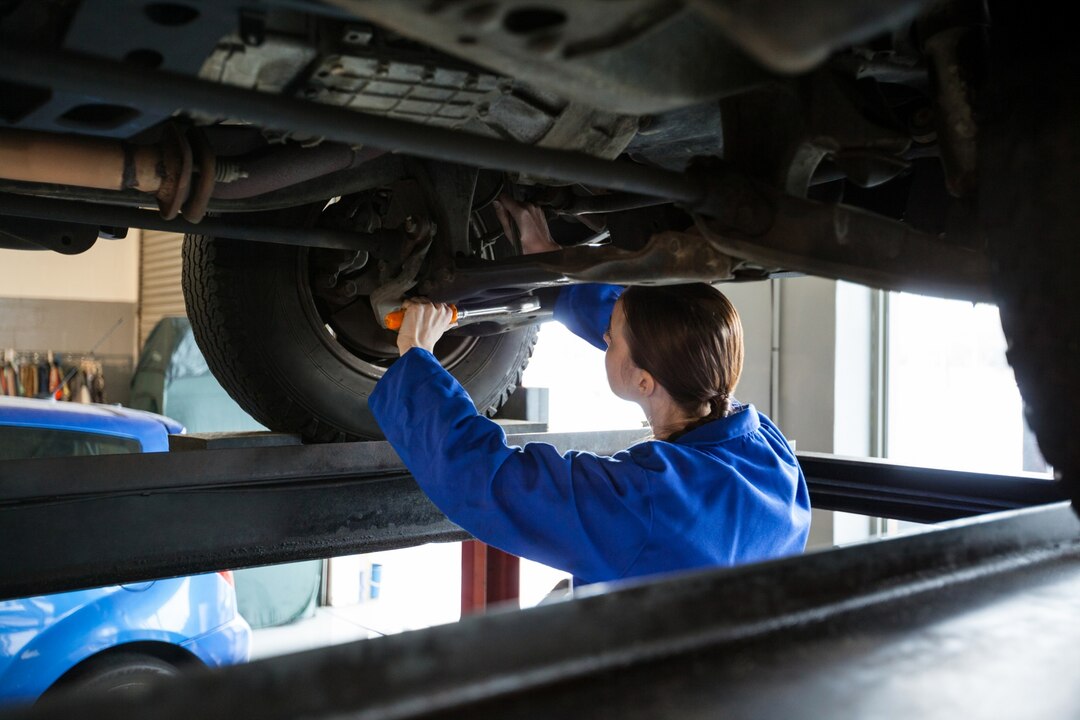The sway bar, also known as the stabilizer bar or anti-roll bar, plays a crucial role in maintaining stability and control while driving, particularly during turns and maneuvers. Over time, the sway bar may wear out or become damaged, leading to compromised handling and safety on the road. Recognizing the signs of a failing sway bar is essential for timely replacement and ensuring the continued performance of your vehicle. Here are ten telltale signs that your car’s sway bar may need replacement:
1. Excessive Body Roll:
One of the primary functions of the sway bar is to minimize body roll or sway during cornering. If you notice that your vehicle leans excessively to one side when navigating curves or corners, it could indicate a worn or broken sway bar.
2. Uneven Tire Wear:
A failing sway bar can cause uneven tire wear, particularly on the front tires. As the vehicle’s stability is compromised, the tires may experience increased friction and wear on one side, leading to premature tread wear and reduced tire lifespan.
3. Clunking or Rattling Noise:
A loose or damaged sway bar may produce clunking, rattling, or banging noises, especially when driving over bumps, uneven surfaces, or making sharp turns. These noises indicate that the sway bar bushings or end links may be worn out and in need of replacement.
4. Steering Responsiveness Issues:
A compromised sway bar can affect steering responsiveness and control, making it feel loose or imprecise, particularly during cornering or sudden maneuvers. If you notice difficulty in maintaining a straight line or steering feels loose, it could be a sign of sway bar problems.
5. Excessive Body Sway When Towing:
When towing a trailer or carrying heavy loads, a properly functioning sway bar helps maintain stability and prevents excessive body sway. If you experience increased body sway or instability when towing, it may indicate a worn or damaged sway bar that requires replacement.
6. Vehicle Tilting During Lane Changes:
During lane changes or evasive maneuvers, a healthy sway bar helps keep the vehicle stable and level. If you notice excessive tilting or instability when changing lanes at higher speeds, it could signal sway bar issues that need to be addressed.
7. Visible Damage or Corrosion:
Inspect the sway bar visually for signs of damage, such as cracks, bends, or corrosion. Damage to the sway bar can compromise its structural integrity and effectiveness, leading to handling problems and safety concerns on the road.
8. Excessive Body Lean When Cornering:
A failing sway bar can result in excessive body lean or roll when cornering, even at moderate speeds. If your vehicle feels unstable or tips excessively to one side during turns, it’s a clear indication that the sway bar may need replacement.
9. Steering Wheel Vibration:
Worn sway bar components, such as bushings or end links, can cause vibrations to transfer to the steering wheel, especially during cornering or driving on rough roads. If you feel unusual vibrations or feedback through the steering wheel, it may be due to sway bar issues.
10. Reduced Stability in Crosswinds:
A properly functioning sway bar helps maintain stability and control, even in windy conditions or when driving at higher speeds. If you experience reduced stability or difficulty maintaining your lane in crosswinds, it could be a sign of sway bar-related issues.
The sway bar plays a critical role in ensuring stability, control, and safety while driving. Recognizing the signs of a failing sway bar is essential for addressing issues promptly and preventing potential safety hazards on the road. If you notice any of the aforementioned signs or symptoms, it’s advisable to have your vehicle inspected by a qualified mechanic or automotive technician to determine if sway bar replacement is necessary. By addressing sway bar issues proactively, you can maintain the performance and safety of your vehicle for years to come.











